The Original, The Evolution, and The Alternatives
We’ve finally arrived at the final post in our series! I’ve discussed the aesthetic appeal and genuineness of the Chinese wedding accessories and clothing. However, as generations changed, so did wedding attire. In addition to “Qungua,” there are two more well-liked options for bridal gowns. Come along with me as we explore more about them!
The “Xiu He Fu”, The Substitute of “Qungua”
The younger generation may not be able to distinguish clearly between “Xiu He Fu” and “Qungua” in the present day, and some of them may believe that these two phrases refer to the same style of wedding attire. However, they are very distinct, and “Xiu He Fu” is a pop-up that has TV program which launched in 2001 influence. When a well-known Chinese actress wore “Xiu He Fu” in that drama, most women found it to be sophisticated and attractive. People think it might be a new style of wedding dress because of its crimson design. Fun fact: “Xiu He Fu” has no particular significance. This moniker originates from the fact that the drama’s character is called “Xiu He.” As a result, the clothes she wore are referred to by the name of the character. This bridal gown has since been titled “Xiu He Fu.”
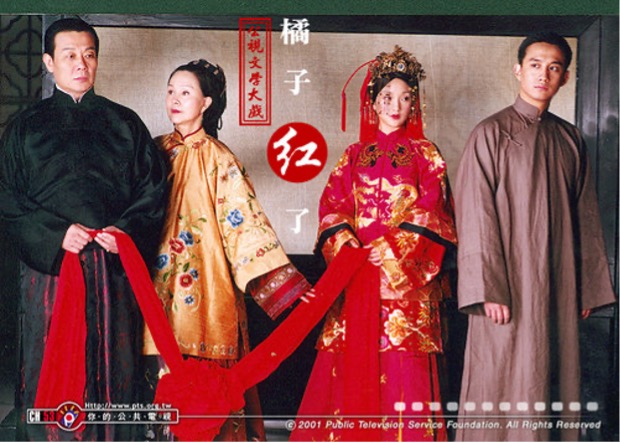
*The second right actress named “Xiu He” in the drama. Since then, the costume she wore has been called “Xiu He Fu.”
Though the patterns appear to be similar to “Qungua,” “Xiu He Fu” has completely different detailing. Despite having two pieces—a top and a skirt—and using red as their primary color, the styles of the two outfits differ. Both the top and skirt of “Xiu He Fu” use a loose-cutting design, and the dress uses an A-line cutting with an umbrella-like hemline. Besides, there is less embroidery on “Xiu He Fu,” the embroidery will be simpler, mainly using gold and silver threads but seldom crystal or sequin. Therefore, for couples who would want to have their outdoor wedding portraits taken wearing Chinese-style wedding gowns, “Xiu He Fu” would be a great substitute for “Qungua.”
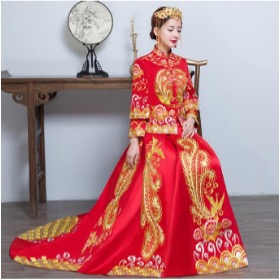
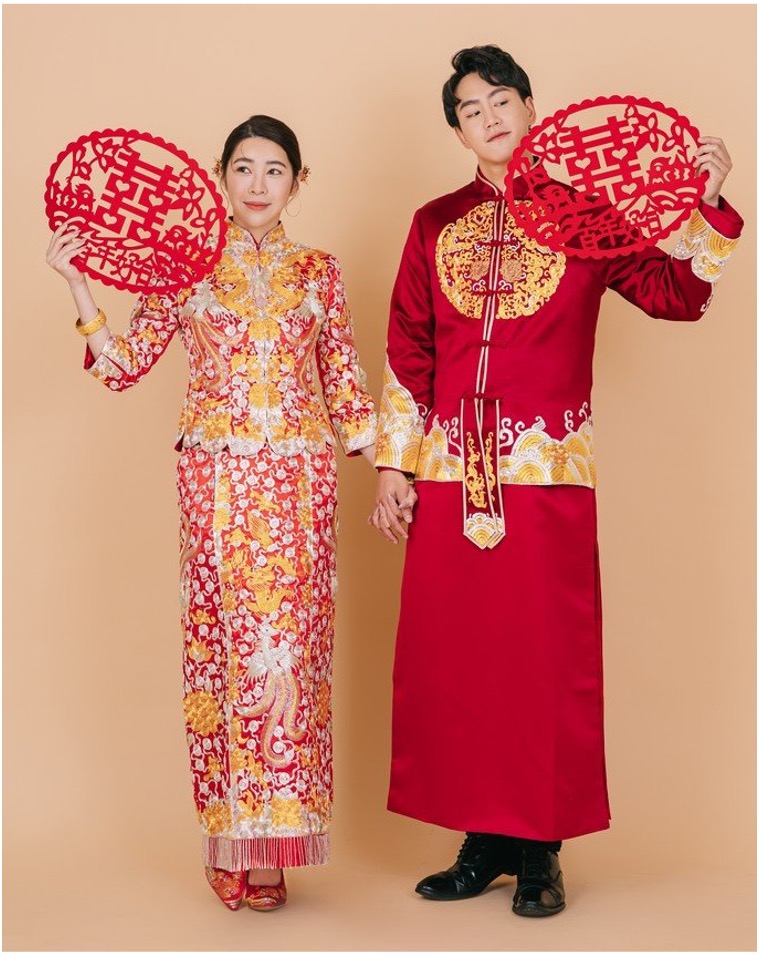
*The picture on the left is “Xiu He Fu” while on the right is “Qungua,” the difference between the two costumes is about the embroidery and the cutting of the skirt: one is A-line cutting while the other is slim-cutting.
The “Qipao”, The Oldie but Goodie
The majority of people think of “Qipao” when discussing traditional Asian attire. Indeed it is! Even when some tourists from the West visit Asian nations like China or Hong Kong, they might attempt to dress in “Qipao” and create a collection of photographs. Qipao is being popular because it is an outfit that demonstrates women’s body shape glamour solely. Its slim cutting design, together with high heels, helped exaggerate women’s elegance and gentleness seamlessly. Therefore, some brides would choose Qipao as their Chinese wedding dress. On the one side, the dress can help to show their elegance. On the other side, brides can own a custume-made wedding dress on a more economical budget.
In contrast to “Qungua” and “Xiu He Fu,” “Qipao” is not primarily known for its use of embroidery threads and ornamentation. It is exclusively about the tailor’s stitching skills and the cloth selection, from the edges-wrapping to the button making, as well as the skills of matching the cloth pattern. If the tailor’s talent is not mature, the “Qipao” can barely reveal women’s elegance.
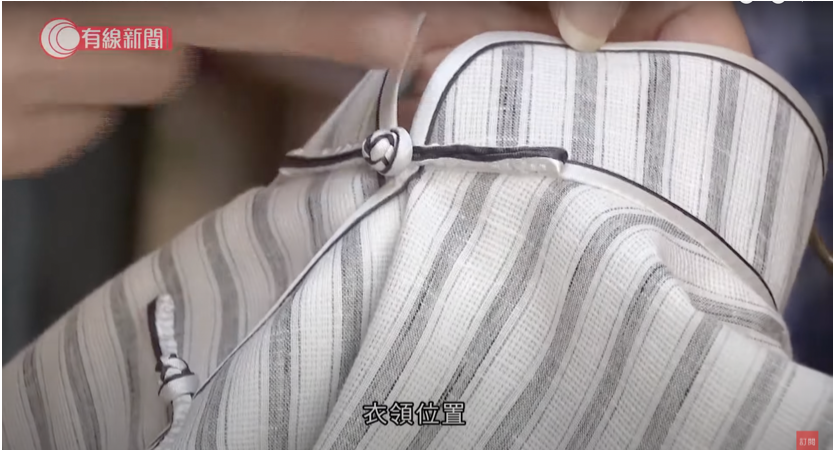
*The pattern is aligned even there are button and the collar
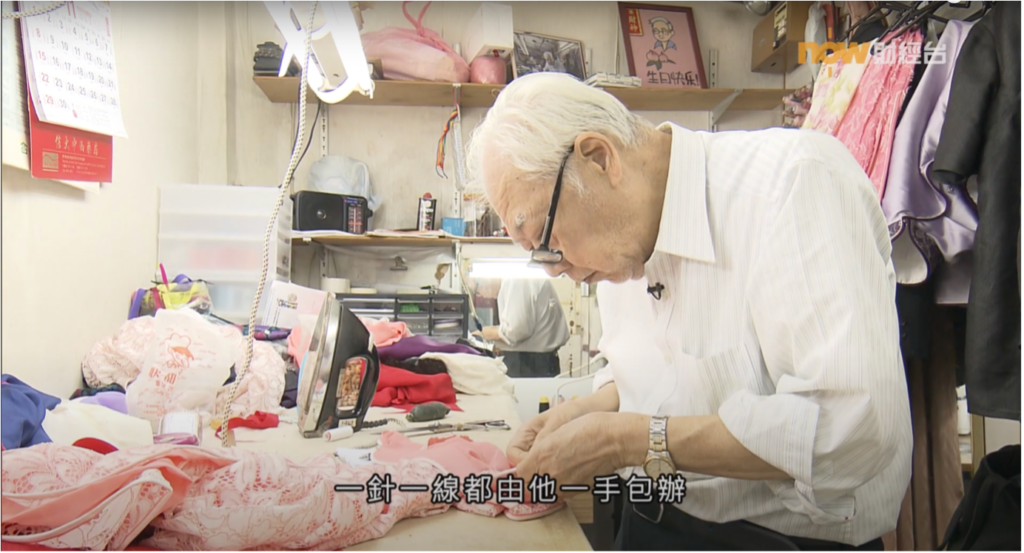
*The tailor is making a “Qipao” manually. Since making “Qipao” is complicated and requires bucketloads of patience, most young designers lost interest in learning about it. Thus, only 4 well-experienced old tailors tailor “Qipao” in Hong Kong.
Yet, to cater to the tastes of the present market, designers have also infused “Qipao” with some Western and trendy aspects. For instance, the wedding theme “Qipaos” always featured lace cloth, with the primary colors being red and white, to symbolize the elegance and sophistication of ladies. Regarding the cutting, it now features Western wedding gown styles like the mermaid and halter crop in addition to the most realistic slim-fit design. Therefore, tailor-making a wedding style “Qipao” would be a fantastic choice for brides who desire a distinctive wedding dress at a more affordable price.
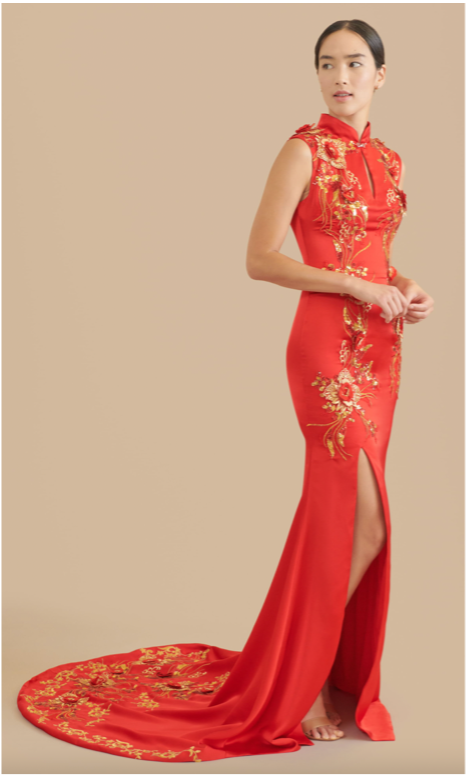
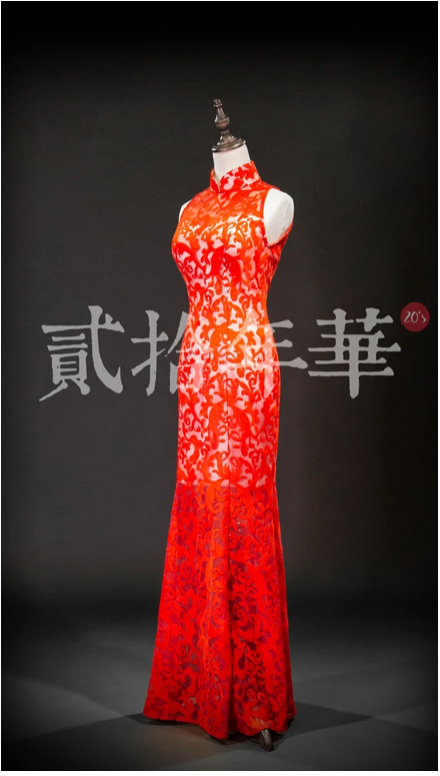

*The wedding style “Qipao,” with the lace element and the Western wedding dress design element.
The Wedding Attire, The Brides’ Glamour
Whether they are Eastern or Western, wedding gowns are made to make brides seem beautiful and contribute to a special occasion for them. People may be familiar with Western wedding gowns because their popularity is widespread worldwide. Still, I hope this series of blogs can help you have a brief idea about the attractiveness and stories of Eastern wedding dresses. So, let’s try to wear the traditional Chinese wedding gown and snap some pictures the next time, if you get the chance. I’m eager to hear your thoughts on it. See you soon and stay tuned!
